Many of our clients at Edition Kitchens have favoured the Shaker Kitchen style in recent years.
Why, you may wonder? Well, in our experience, the Shaker style stands the test of time, having been around since the 18th century – popular then, and still popular now.
Its versatility allows you to seamlessly integrate the Shaker style into a wide range of design schemes, from classical to modern and everything in between.
This style of cabinetry is also easy to clean and maintain, and thanks to our selection of quality materials that we provide at Edition Kitchens – they offer a high level of durability, making it a perfect choice for a busy family kitchen.
In this post, we’ll cover everything you need to know about the shaker style to help you determine if it’s the right choice for your new kitchen.
What is a shaker style kitchen?
Put simply, Shaker style kitchen cabinets boast a straightforward and minimalist design. They feature flat centre panels, minimal to no ornamentation, and are typically crafted from solid wood with straight edges.
The focus of Shaker style units is on minimalist design and functionality, prioritising symmetry and minimal detailing.
With shaker style cabinets, the focus is on creating a space that is both aesthetically pleasing and highly functional, with symmetry and minimal detailing playing key roles in achieving the desired look.
Where did it all begin for Shaker Kitchens?
The style originates from the religious movement “Shakerism” which was founded in the mid 1700’s, but it wasn’t until a century later that the Shakers design gained mass appeal.
The original Shaker kitchens reflected the modesty inherent in the Shaker religious beliefs. With a commitment to simplicity and functionality, the Shakers crafted furniture and kitchen elements using only essential components. This approach stemmed from their dedication to a humble way of life, prioritising utility over extravagance.
As a result, Shaker kitchens became synonymous with clean lines, practicality, and a timeless aesthetic that continues to inspire modern design.
What are the key features of a shaker kitchen?
Shaker Kitchen cabinet doors consist of a recessed panel and a four/five-piece wood frame, often constructed with dovetail joints. The original Shaker Kitchens were modest, reflecting the Shakers’ religious views as mentioned previously.
Often confused with the “Traditional Kitchen”, the shaker style differs in that it is minimalistic, whereas the traditional kitchen cabinet may feature detailing, embellishing or ornamentation. This makes the shaker style more distinctive and allows for integration into numerous design styles.
Modern designs tend to be more pared back and minimal, whereas those opting for a more traditional look may choose to add more decoration or options like cornices (although this option is more associated with inframe kitchen designs).
Shaker Vs In-Frame Kitchens
Shaker and in-frame kitchens both epitomise timeless design, but they diverge in their approach to cabinetry construction.
Shaker kitchens boast simplicity and elegance, characterised by their distinctive recessed panel doors. In these kitchens, the doors lack a visible frame, offering a clean and minimalist aesthetic.
Conversely, in-frame kitchens feature doors or drawers set within a visible frame. This design accentuates the cabinet structure, creating a sense of depth and texture.
While both styles exude charm and functionality, Shaker kitchens embrace a frameless approach that will generally fit into more interior styles, while in-frame kitchens celebrate the beauty of framed cabinetry.
Here’s an example of an inframe kitchen that was handcrafted by our friends at Garrett Dillon Kitchens.
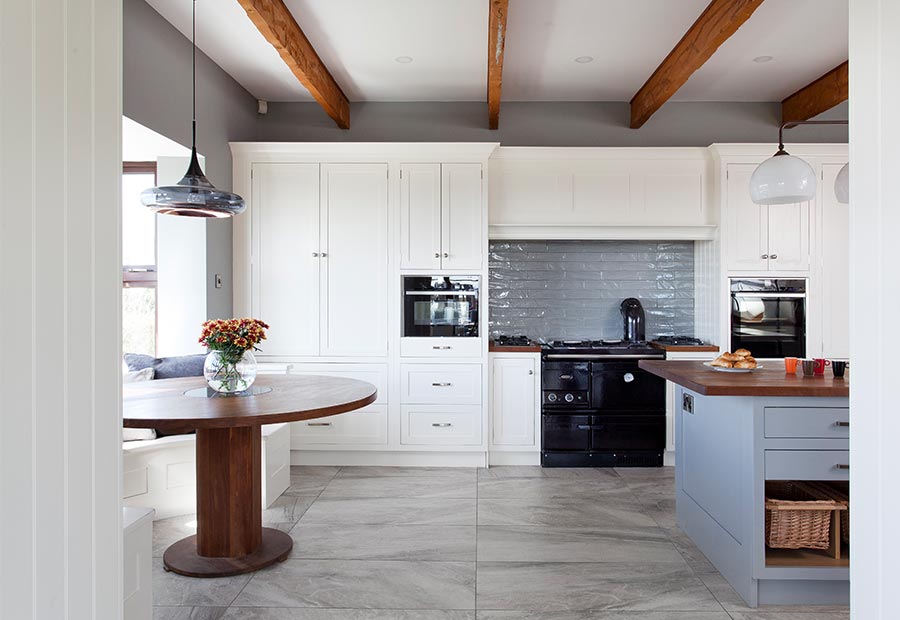
What material are shaker cabinets made from?
Traditionally, joiners & cabinet makers build traditional shaker doors with materials like oak, soft maple, or other solid woods like birch.
Nowadays, most kitchen suppliers use materials like MDF( or high tension mdf plus) which has a number of benefits including:
- Lacks grain – less risk of damage when drilling, easier to keep clean, and a smoother surface.
- MDF does not expand/warp like solid wood
- MDF holds better to hinges and screws thanks to its high density.
- Easy to stain/apply new colour.
- Environmentally friendly if manufactured using recycled products.
Ofcourse, there are lots of benefits to solid wood too, but this route does require a more handsome budget. If you would prefer to opt for a solid wood kitchen, why not speak to our colleagues over at Garrett Dillon Kitchens. They have over 23 years of experience in delivering handcrafted, luxury kitchens.
Handle options for Shaker Kitchens
Regarding handles, prioritise functionality and discretion, just like the Shakers intended: opt for options that are easy to open without being overly ornate or attention-grabbing.
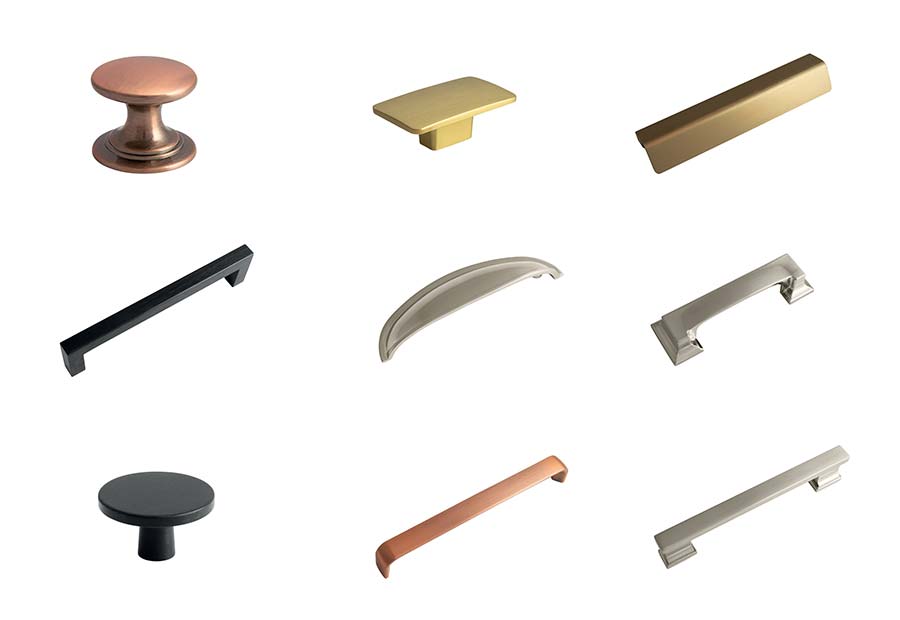
Simple knobs or cup handles are ideal choices for this style, seamlessly blending into the aesthetic while providing practicality.
We’re big fans of brass handles at Edition Kitchens, especially when combined with a bold colour palette. We walk through a range of handle styles and finishes during our design consultation with you. Not only will we present you with several style options, but we will also incorporate it into a 3d design so you can truly envision the look of your new shaker kitchen. Not to mention all of the other details, from sinks, faucets, worktops, splashbacks, appliances and much more – giving you a complete picture of your new kitchen design.
Colour Options for Shaker Kitchens
While a traditional Shaker kitchen was often left unpainted, you can bring yours into the 21st century by finishing it in some deep, bold colours – perhaps the vintage pink, or heritage green options mentioned below.
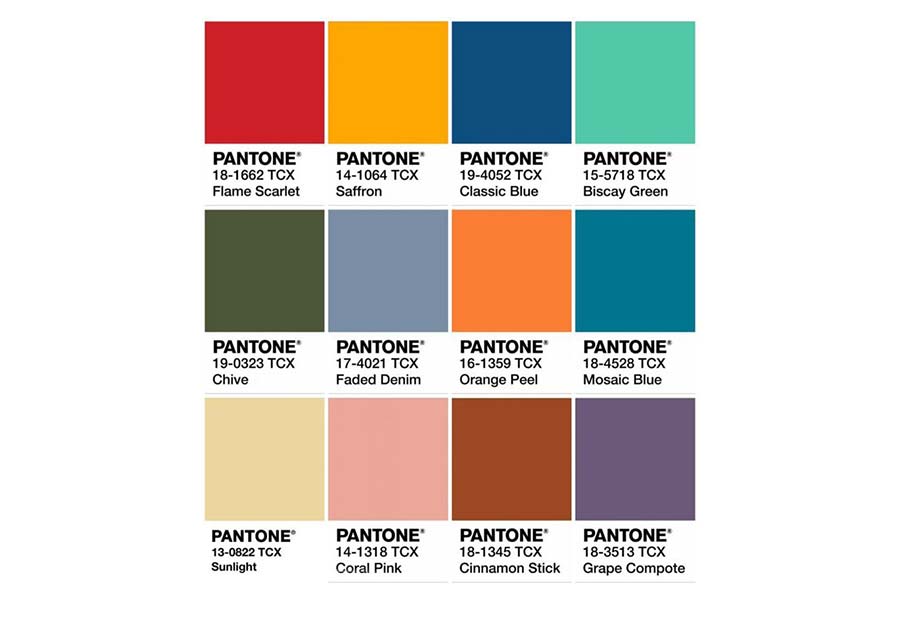
Originally, Shaker kitchens were finished in simple colours, typically bright single tones like light blues, greens, white, cream, or natural wood stains. This understated palette complemented the Shaker beliefs of simplicity and purity in design.
In contemporary Shaker kitchens, a broader spectrum of colour tones is embraced. Off-whites and light pastel shades remain popular amongst Edition clients, enhancing the kitchen’s clean and airy atmosphere while providing a backdrop for other elements to take the attention.
Moreover, modern interpretations of Shaker style often incorporate bolder colours such as muted greys and blacks, adding a touch of sophistication to the space while preserving the essence of timeless design.
How about this bold Slate Blue example…

Or this Heritage Green finish…
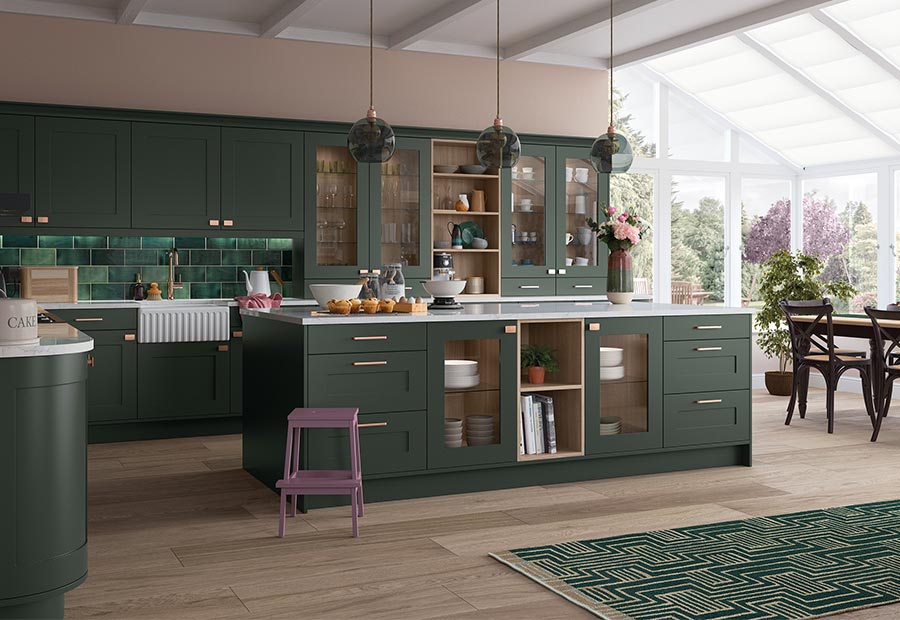
Or this Edition finished in a contrasting slate blue/vintage pink kitchen.
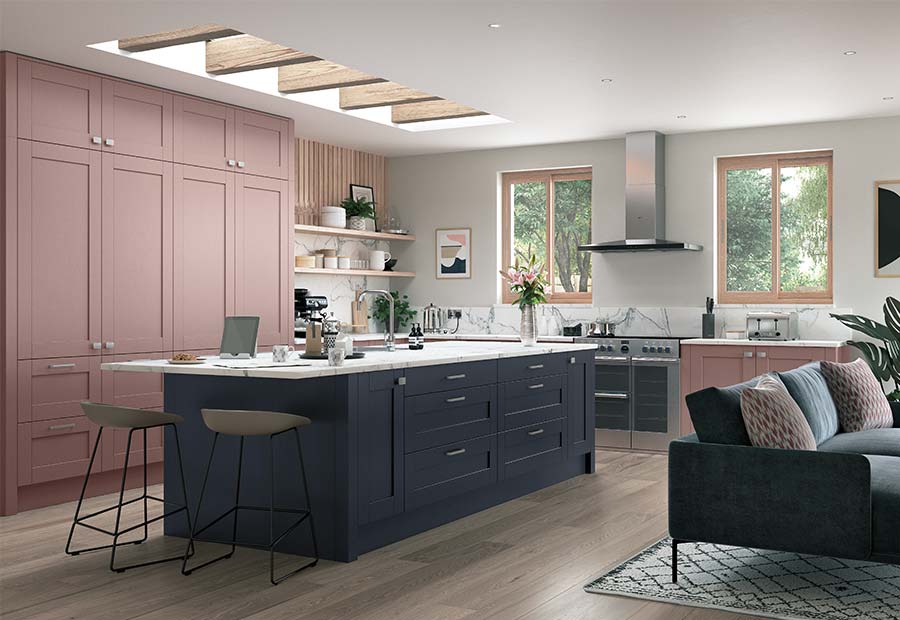
Quick tips on Shaker Kitchens from Our Design Team
- Ensure you know how much storage you will need, if you’re leaning towards opting for a inframe kitchen – consider that there’s likely less room for larger items given the narrower door frame.
- Use Open Shelves to create a more open and airy space, especially if you pare down the number of items on display.
- If your homes interior is modern, focus on keeping things simple (no decoration) with bold colours, whereas a more traditional interior